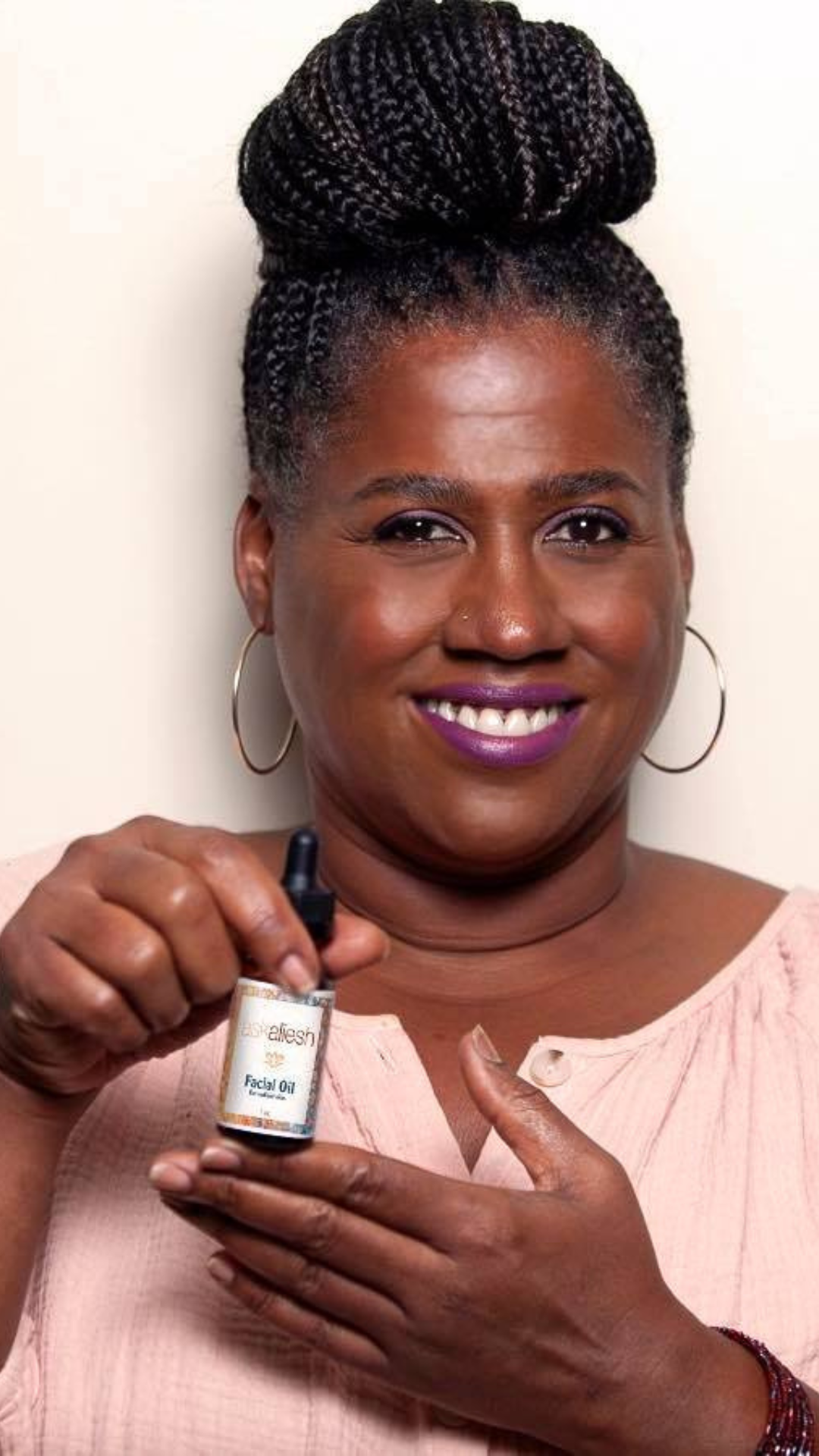Darker skin tones can tolerate exfoliating procedures, however, you must have a stronger understanding of your client over and above where they fall on the Fitzpatrick scale.
Ethnicity is an ever-evolving classification of a certain population based on genetic similarities. As estheticians, we should gain an appreciation for our clients’ diverse backgrounds to establish stronger relationships. We should try to understand their cultural practices, lifestyle choices, and even their religious beliefs. Ethnicity encompasses much more than genetic similarities. It is part of how a person identifies.
In this rapidly changing industry, estheticians must begin to move beyond merely classifying clients by their Fitzpatrick Skin Type and ask questions about ethnic ancestry that reveal details needed to avoid adverse reactions.
We all know that due to their active melanocytes, it is best to exercise caution when selecting exfoliating procedures to treat deeply pigmented skin. While dark skin types maintain youthfulness at least a decade longer than lighter skin, all of your clients want the same thing – to maintain a healthy glow well into their senior years.

Contribution by Aliesh Pierce
6 Types of Exfoliation For Ethnic Skin
Exfoliation is a therapy that speeds up the skin’s natural desquamation process. There is a shedding of what is commonly referred to as “dead skin” to allow for new cells to rise to the outermost layer of the epidermis. Selecting the appropriate exfoliation protocol for your client can improve skin tone, reduce the appearance of fine lines and wrinkles, balance sebum production, and improve overall texture by addressing congested follicles, acne breakouts, and mild acne scarring.
1 Enzymatic Exfoliation
Enzymes are the perfect form of exfoliation for the novice client or those with sensitive skin. Proteolytic enzymes remove surface cells without altering the skin’s pH like acids with usually no skin irritation or downtime. The fruit enzymes papain and bromelain are the most popular. However lipase, catecholase, and pectinase can be found in various professional brand’s formulas as well. Enzymes are considered to be natural and are safe to use on all ethnicities and skin conditions.
2 Chemical Peels
Estheticians have access to many different types of acids, each one selected for its mechanism of action. Lactic, salicylic, kojic, azelaic, and mandelic acids are the most widely used when treating skin of color. These forms of chemical exfoliation have their own unique way of interrupting the melanogenesis process. Due to their large molecular structure, they cause very little inflammation, and next to no down-time.
How To Use Chemical Peels on People of Color
How to use chemical peels for skin of color is a growing segment of the skin care market because much of the world’s population consists of people of color. The non-Caucasian population is currently 29.4% with large estimated growth rates ranging from 8% to 36% in many ethnic groups.
This doesn’t mean that you can’t use other acids. These days most brands formulate for ethnic skin types, buffering acidic combinations so that they are suitable for anyone. That said, assess the skin using a skin classification system like the lancer Ethnicity scale before administering chemical peel protocols. And remember to use caution, especially when treating the skin with Jessner’s solution, glycolic, and trichloroacetic acid (TCA) to target specific issues. Just remember to thoroughly assess your client’s skin before, during, and after a chemical peel series. Unlike the typically recommended two-week period, deep skin tones may require up to two months of prep time.
3 Microdermabrasion
Microdermabrasion is recommended for all skin types. It is an excellent alternative to invasive skin procedures. When administered correctly, it can make subtle changes over time. Whether performed with a diamond tip or corundum crystals, the benefits include a more balanced skin tone, firmer skin, a clearer complexion, and healthy, more compact layers of the skin overall. However, when administered incorrectly on dark skin types, this procedure can result in hyperpigmentation or keloid scarring.
4 Hydrodermabrasion
This procedure is ideal for dark skin tones. Melanin is a sticky polymer-like substance that can slow down the natural exfoliation process. What’s more, skin of color can develop secondary hyperpigmentation when it is stripped of its barrier. Hydrodermabrasion addresses both issues by gently exfoliating senescent skin cells while infusing nourishing ingredients. The lightweight, aqueous serums are then used to target various skin conditions.
5 Dermaplaining
Dermatologists recommend dermaplaning for all ethnicities. Furthermore, a newer approach that incorporates oil for slip and glide, has made it one of the most popular methods of exfoliating dark skin types around today. However, there are conflicting schools of thought. Chandra Bredel, a California-based esthetics educator says dermaplaning is “a very specific treatment option for select client base”. She points out, “the modality was originally intended for mature fragile skins that cannot tolerate advanced exfoliation options like microdermabrasion and chemical peels.” Chandra states that, as more research emerges about how the upper and lower layers of skin less communicate, she is less inclined to utilize this modality.
6 Lasers
Lasers (aka light amplification by stimulated emission of radiation) are often the first line of treatment for clients with lighter skin. The laser is attracted to the various chromophores in the skin, hemoglobin, water, and melanin. The depth of laser penetration is dependent upon how long it takes a wavelength of light to target a chromophore. When the wavelength reaches its target, enough heat is generated to destroy the chromophore.
Avoiding Injury with Laser Hair Removal on People of Color
“I remember being in beauty school and seeing cosmetologists graduating without ever being taught how to care for African American hair or skin. I also know all too well how it feels to go into an establishment and everyone has this look of panic as to who will draw the short straw and have to provide my service.
Or just outright saying “we don’t have anyone who can do your service.” These were some of the factors that drove me to my niche space of providing laser hair reduction for people of color”
Old laser technology stayed in the skin a few milliseconds too long for deeply melanated skin, causing wavelengths to react before reaching their intended target. This often resulted in adverse reactions like blistering, crusting, depigmentation, and scarring. Technicians even had to use caution when using an Nd:YAG to treat skin of color.
NOTE: An l Nd:YAG laser produces a near-infrared wavelength that penetrates to target various unwanted skin conditions.
Newer versions of the Nd:YAG rely on a unique microsecond pulse duration that is 50 to 500 times shorter than the typical pulse duration used by other laser technologies. The energy passes through the skin quickly and therefore does not overheat epidermal melanin, allowing the technician to effectively treat the targeted condition.
NOTE: This new generation of laser technology can be combined with other modalities. For example, reduce client discomfort by dermaplaning before laser hair removal or applying a superficial chemical to people after a tightening lax skin with a laser rejuvenation treatment.

